Today’s amazing Ride to Church comes to us from Angela Clayton and Ken Clayton (who took the stunning pictures). Angie writes:
“Varanasi is considered a holy city by Hindus (as immortalized in the movie “Gandhi”), but it is also holy to Buddhists and Jains. The city has been a continual center of religious life in India for thousands of years. It is often called the oldest living city on earth. The city is generally believed to be over 3000 years old, and Hindus believe it was founded by Lord Shiva.
Varanasi was our final stop in our India tour. Many of my Indian colleagues were surprised we were going there as it’s a destination most Hindus associate with the end of life, and it’s also a place not many westerners visit.
First we visited Sarnath, a small town 13 km from Varanasi. Sarnath is the deer park where Gautama Buddha preached his first sermon. It is one of the four most important sites for Buddhists to visit. Sarnath means “Lord of the Deer.” In one Buddhist story, the Bodhisattva (or saviour) is a deer who offers his life to save the doe the king plans to kill. The king is moved by this action and creates a deer sanctuary he calls “Sarnath.”
Gautama Buddha is believed to have travelled to Sarnath five weeks after his enlightenment. He taught a sermon to his original five companions who became the Sangha, and from there, his movement grew. By 200 B.C., there were over 3000 Buddhist monks at Sarnath. Buddhism flourished here for over a millenium, but the city was sacked by invading Turkish Muslims in the 12th century, who defaced statuary and took building material from the site. There is an excellent museum on location that houses millennia old statues that have been recovered in the area. There is also a Buddhist temple lined with murals depicting the most important events in the life of the Buddha.
After spending several hours in Sarnath, it was time to head to the heart of Hinduism, Varanasi and the Ganges River.”
(Additional information about the pictures from Varnasi is posted below the slideshow, where space is very limited.)
Notes on the Varanasi pics:
1 – We set out in the late afternoon on rickshaws to go through Varanasi and down to the ghats surrounding the Ganges.
2 – Marnie and I are in the first rickshaw, Jeff and Chad in the second. Ken and our tour guide are in a third rickshaw not shown. As we got closer to the Ganges, the traffic got heavier. In Varanasi, as in most cities in India, the traffic includes rickshaws, pedestrians, meandering cows, people on motorbikes, vendors with handcarts, etc.
3 – We passed many local shops on our way to the river.
4 – In India, the more color the better. Indians care a lot for beauty, and Indian spirituality is full of far more vibrant colors than you will see in your average LDS ward.
5 – As we got further along our journey we could hear a lot of men chanting. It wasn’t religious, though. Halfway to the river, we were stopped behind hundreds of men standing shoulder to shoulder, waving signs and shouting and chanting in Hindi. We confirmed later that this was a protest of a proposed 1% tax on gold (we had been caught in another protest of the gold tax earlier that same week in Jaipur). Marnie (age 9) was very nervous about being surrounded by so many angry Indian men, many of whom were staring at the Western women in the rickshaw. I assured her that they were chanting “Death to the Americans.” She rolled her eyes.
6 – We finally ditched the rickshaws and continued toward the river Ganges. As we got closer, we slipped in some cow dung that was littering the sidewalk.
7 – At the river Ganges, our family boarded a small row boat. As we looked back, we could see the evening worshippers beginning to line the ghat for the evening aarti ceremony.
8 – Here we are aboard our dinghy: Jeff, Chad, Angie and Marnie. We took the boat further downstream, releasing some offerings into the river on our way. Because the Ganges is considered sacred, many Hindus will spend the last years of their life living by the river, waiting for death.
9 – The boat took us to one of the funerary ghats further downriver. For Hindus, being cremated at the Ganges releases them from the continuous cycle of death and rebirth. Only members of the lowest caste operate the cremation fires which run continuously all day and night, all year. Our tour guide said that the same flame has been maintained for a thousand years. There was a pile of ashes from the cremations about 10 or 12 feet high, spilling into the Ganges. People have been cremated by the Ganges for thousands of years. Only the married are cremated. Children and holy men are simply weighed down with rocks in the river.
10 – When we returned to the Dashashwamedh ghat, the aarti was being performed for the hundreds of worshippers gathered on the steps as well as hundreds in a flotilla of boats surrounding the ghat. Nine Hindi priests, aged 19-20, perform a series of rituals to offer all aspects of creation to the deities. They also chant in unison while they perform. If they make a mistake, the bishop tells them to start over again – no, wait, that’s Mormonism.
11 – A priest offers items such as a flower (representing the earth), water (fluidity), a cone of candles all lit up (heat), a peacock fan (movement), and a yak-tail fan (space).
12 – Incense is used to symbolize the purified state of mind, one’s intelligence offered through adherence to rules of timing and ritual (dharma)
13 – A priest offers a flaming urn.
14 – A priest performing the aarti ritual.
15 – A priest coming to the end of the aarti ritual.
16 – Morning on the Ganges. The day dawns the following morning for a different view of this important Hindi site.
17 – Varanasi when viewed from the Ganges at dawn.
18 – Hindi women bathing their feet with sacred water of the Ganges. If a devout Hindu bathes in the Ganges before death, it will stop the reincarnation cycle and allow the person to progress to Nirvana.
19 – Hindi worshippers bathing in the Ganges. Women remain clothed in their traditional sarees. Most men remove their outer clothing.
20 – Son Jeff in a boat on the Ganges with one of the ghats (steps that line the river Ganges) in the background.
21 – Day breaks as a lone man swims in the river Ganges.
22 – A sadhu (holy man) bathes in the river Ganges. He is dressed in the clothing of one who has entered the 4th and final ashrama or stage of life: “Sannyasa” or the wandering ascetic stage. At this point of life, the Hindu has left all family and worldly cares behind and is preparing for death.
23 – Bathers in the Ganges.
24 – More bathers in the Ganges.
25 – A small temple in Varanasi as seen from the Ganges.
26 – Bathers in the Ganges.
27 – A flotilla of boats lining the Ganges.
28 – Worshippers on a ghat line the Ganges.
29 – Worshippers in Varanasi, next to the Ganges.
30 – Jeans left out to dry next to the Ganges.
31 – A man washing clothes in the Ganges. In addition to being a holy river, it is for locals also a practical place for keeping clean. Unfortunately, it is also a river with a lot of pollutants from chemical plants upstream, as well as the human pollutants from the cremations. When a person is not fully cremated, the remainder (usually a part of the torso) is simply pushed into the river.
32 – Boats on the Ganges in Varanasi.
33 – Hindu carvings top the buildings along the Ganges.
34 – Sons Jeff and Chad enjoy their morning cruise.
35 – Another area of Varanasi adjacent to the river.
36 – The vibrant colors of Varanasi.
37 – Advertisements on turrets in Varanasi.
38 – A boat floats by a nearby temple balcony.
39 – Next to the Manikarnika Ghat is a temple sinking slowly into the sand and mud. It is next to one of the burning (cremation) ghats.
40 – A narrow alleyway is our path back through Varanasi after the morning Ganges tour.
41 – Ken and Angie pose in front of the Vishwanath temple at nearby Benaras University.
42 – The Vishwanath temple is two stories in the interior. Walls are carved with Hindu scriptures, many of which sound similar to sayings of Jesus or even Book of Mormon scriptures. Worshippers in the temple leave offerings (usually garlands of flowers and incense) at temple deities, elaborately carved statues of different Hindu gods. Different Hindus identify with different deities and look to them for guidance.
43 – Outside, garlands drape the statue of a Nandi bullock. Nandi is considered to be Shiva’s mount. Shiva is the third member of the Hindu “godhead” (Brahma the creator, Vishnu the protector, and Shiva the destroyer). Because of the role the sacred river Ganges fills, Shiva is the primary deity worshipped in Varanasi.


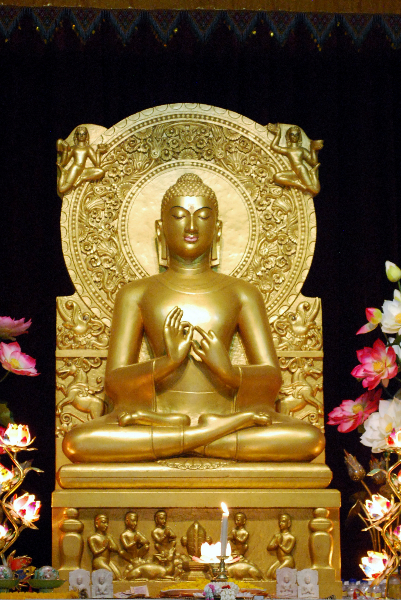
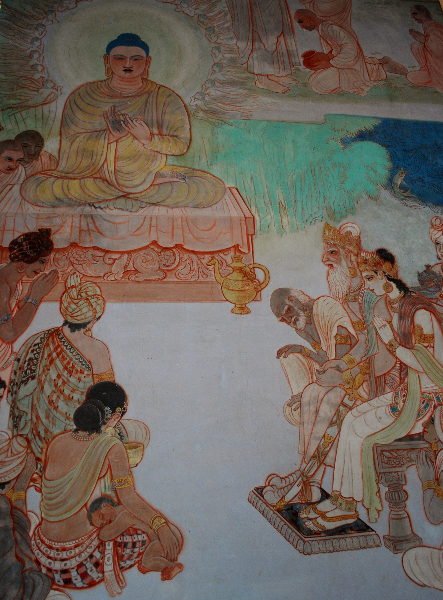


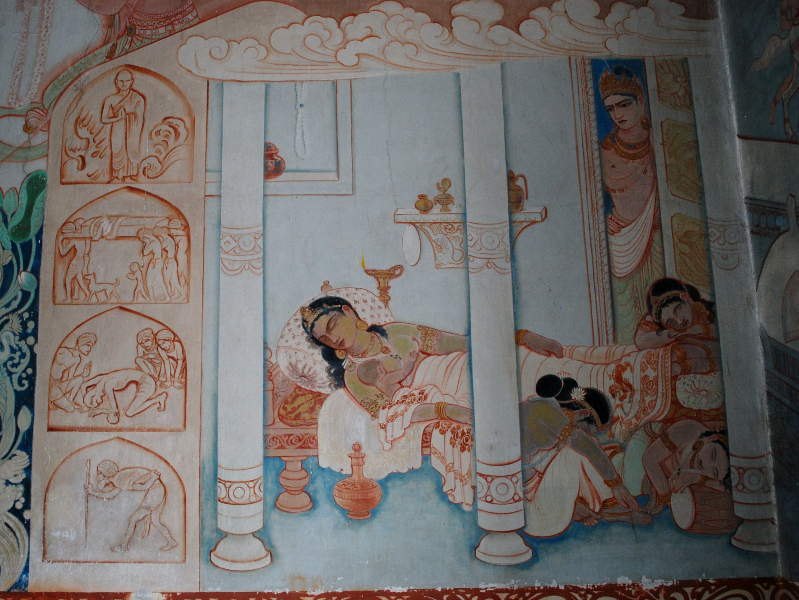



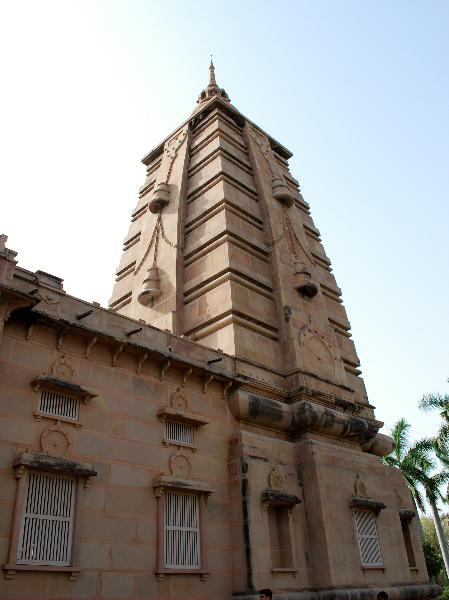
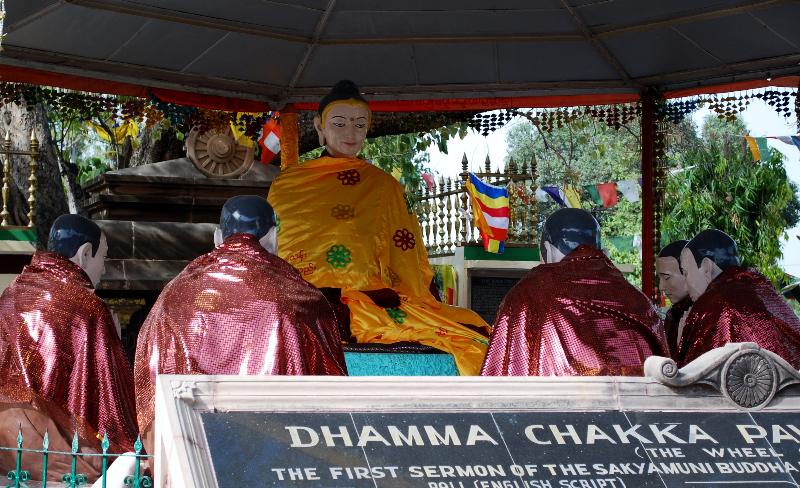

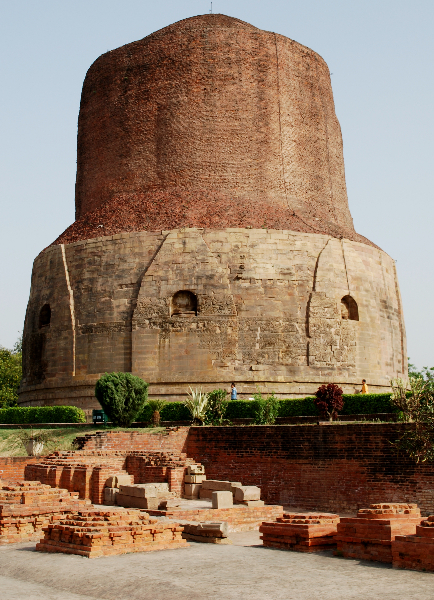

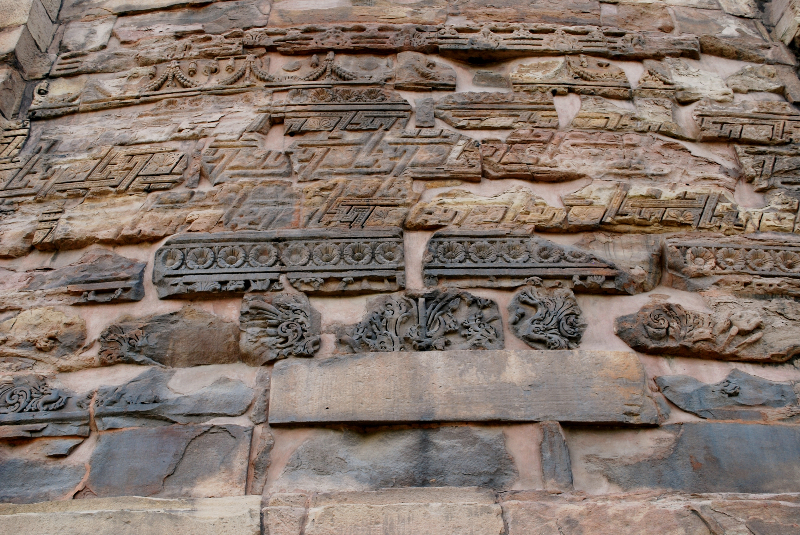


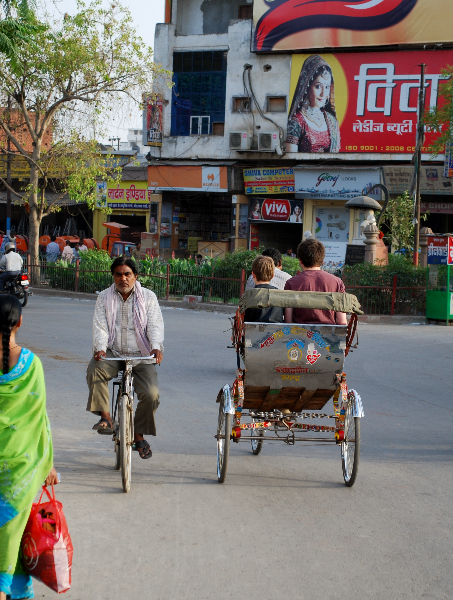
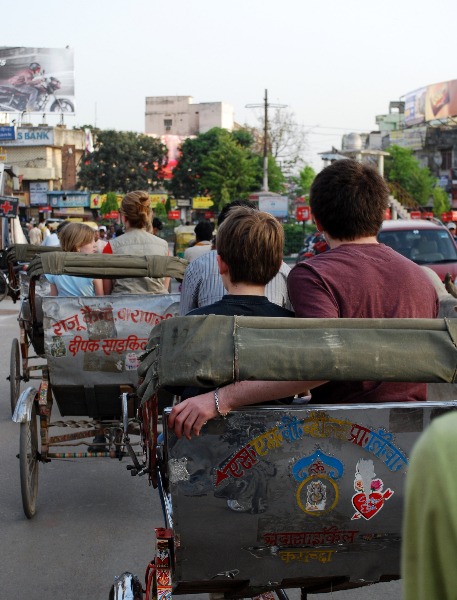

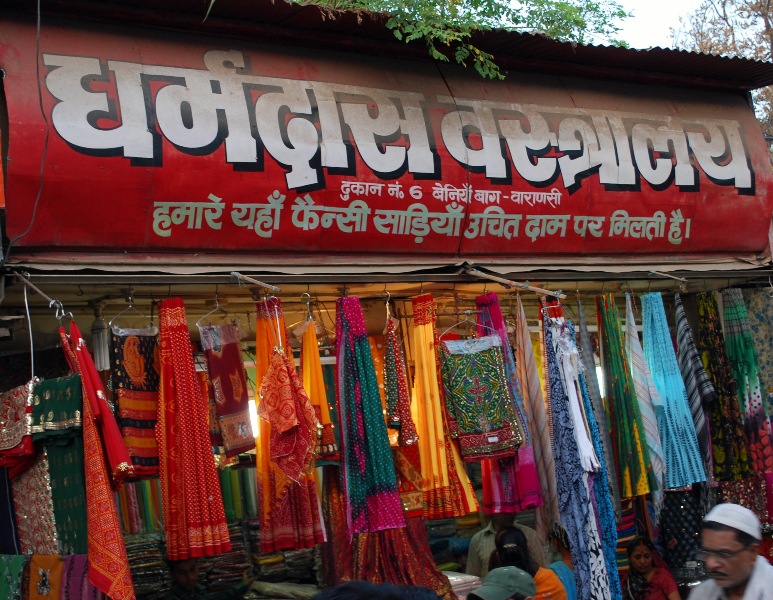

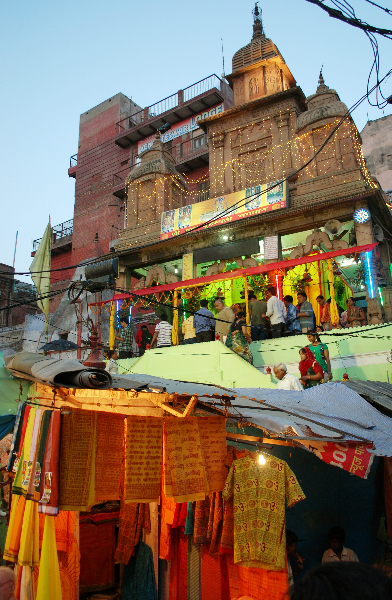



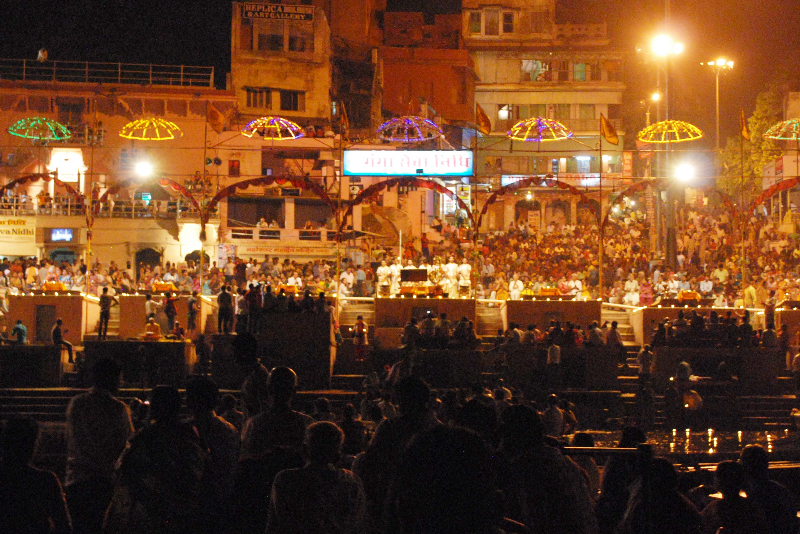

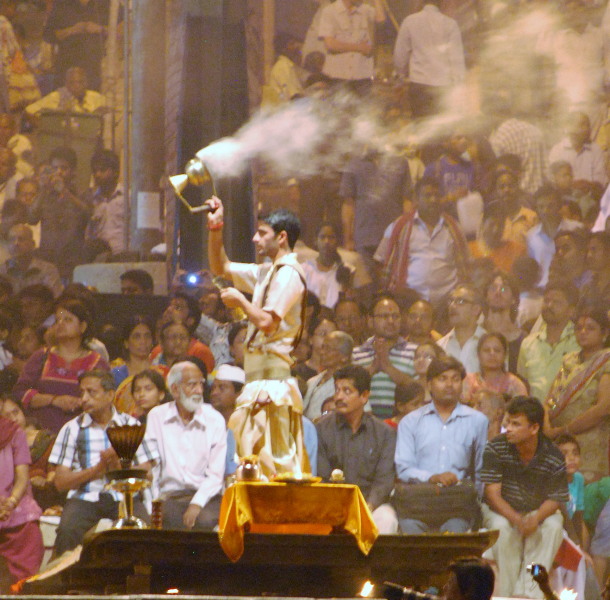

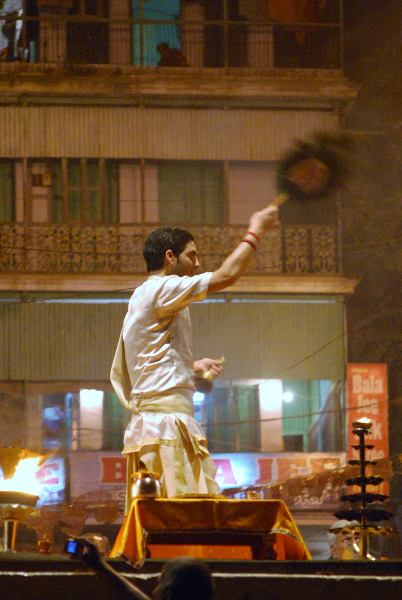
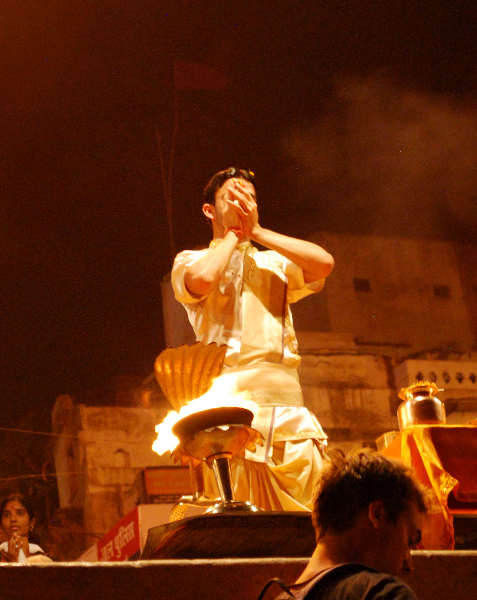
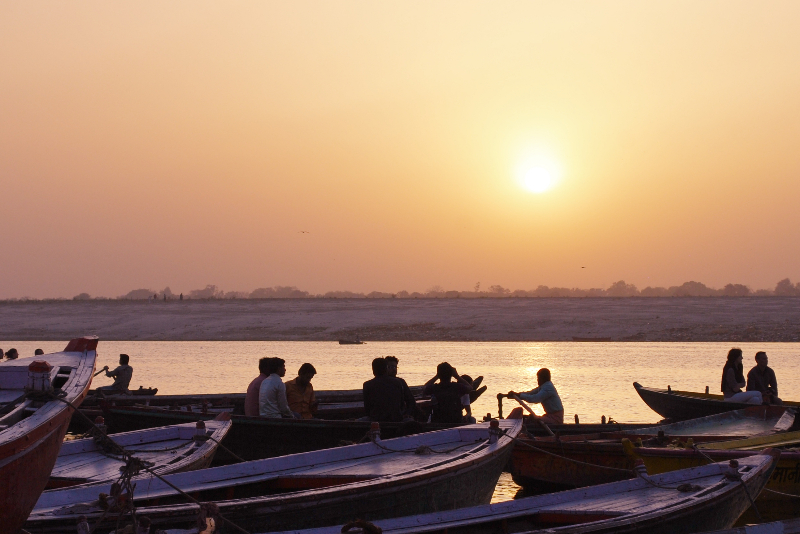
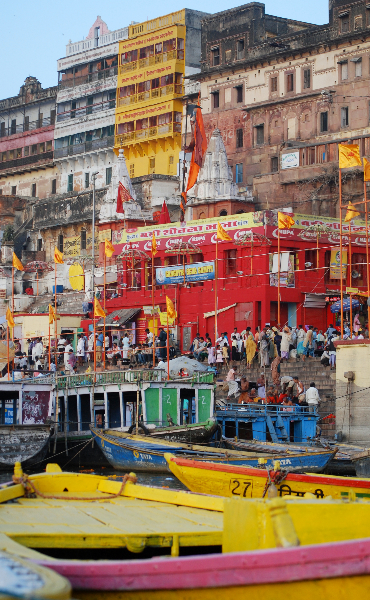
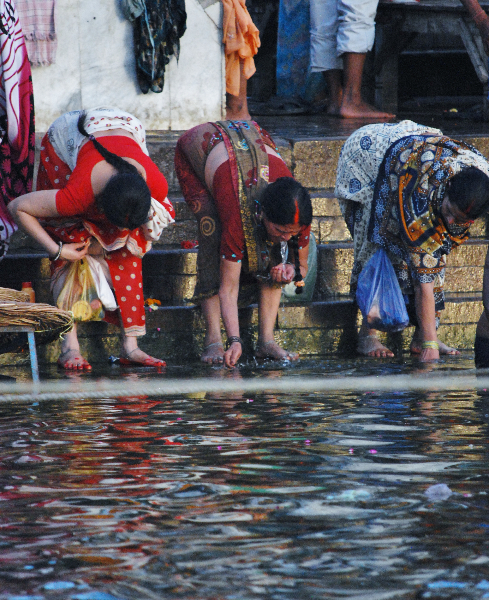
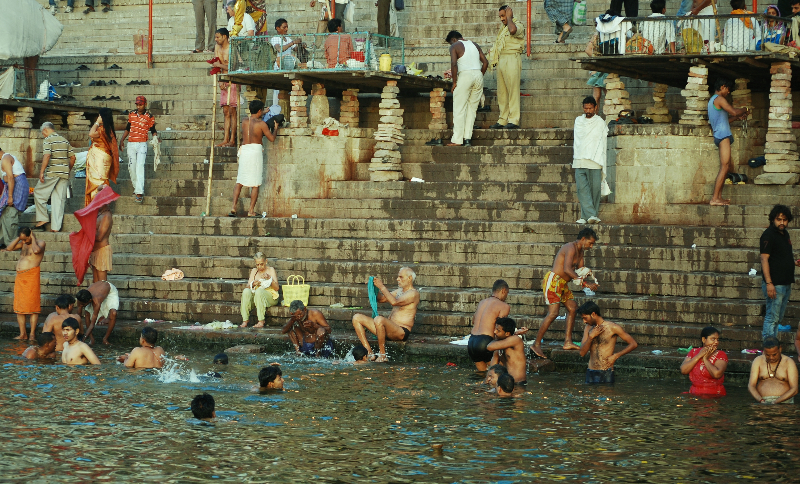
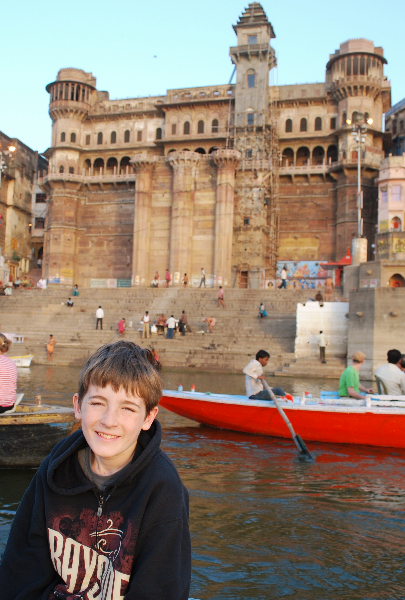
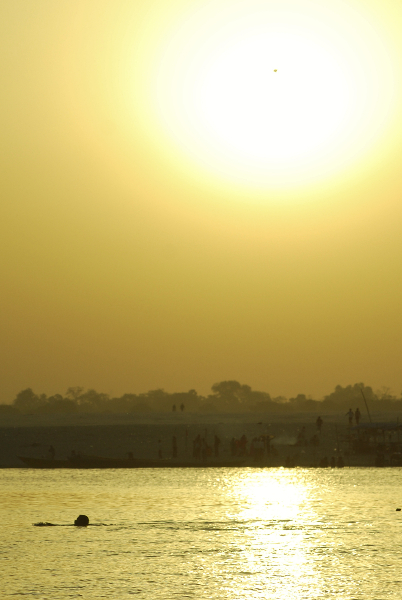



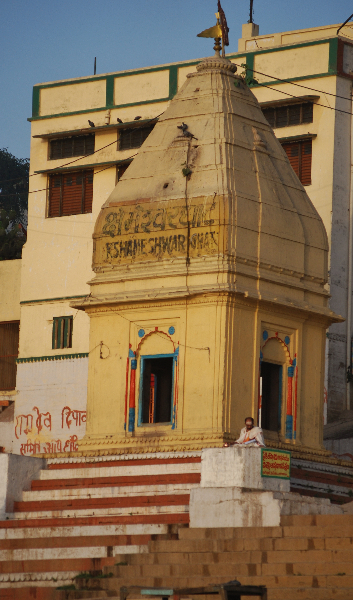
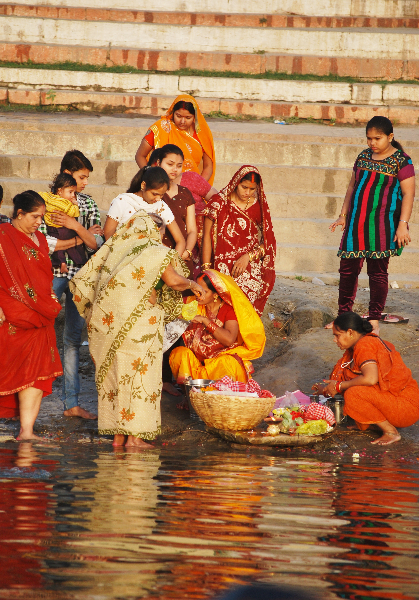
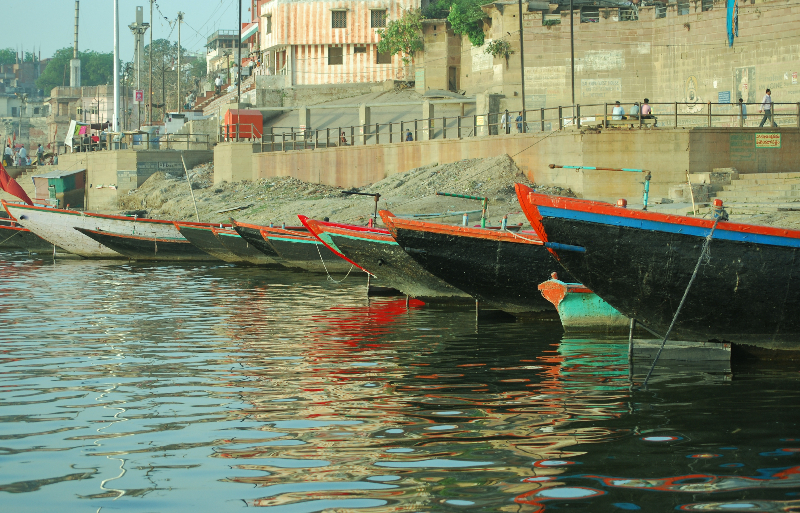
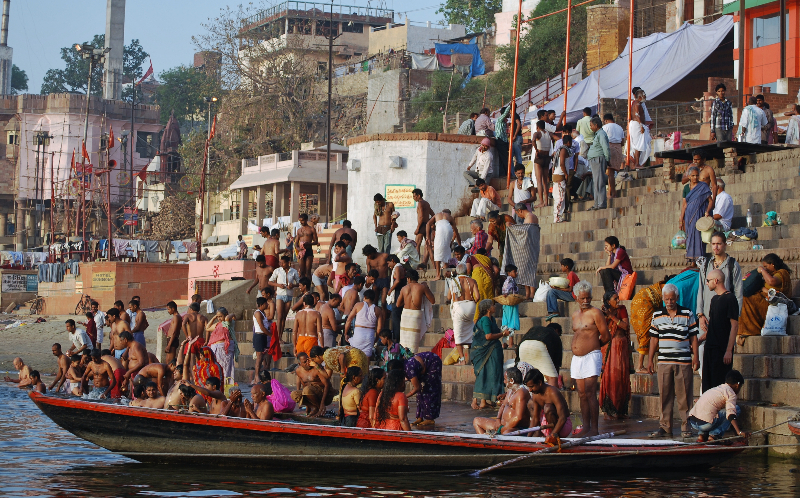
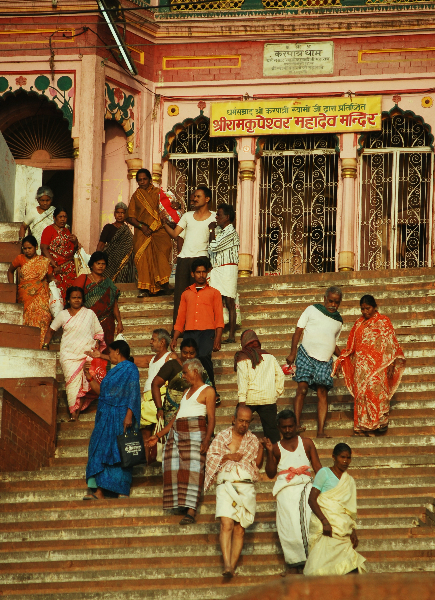

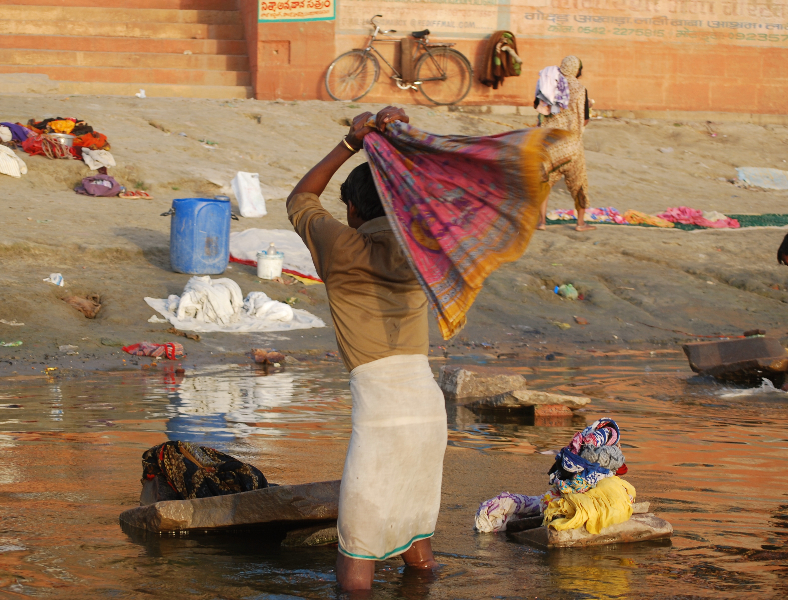

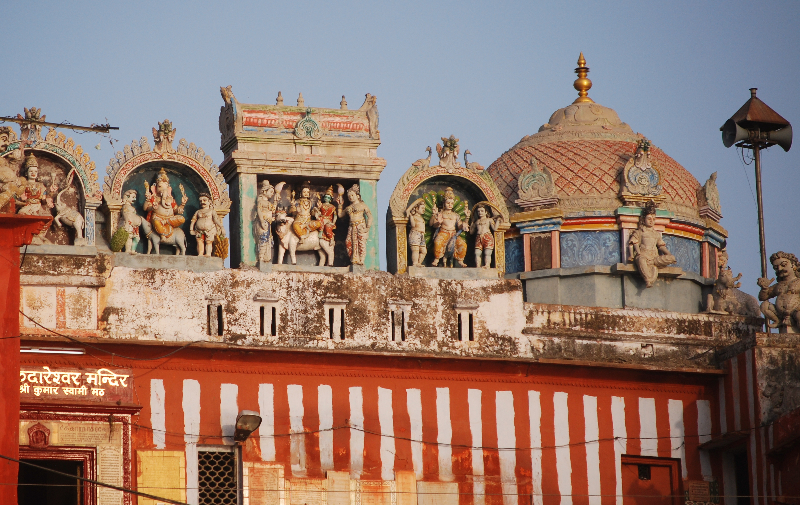
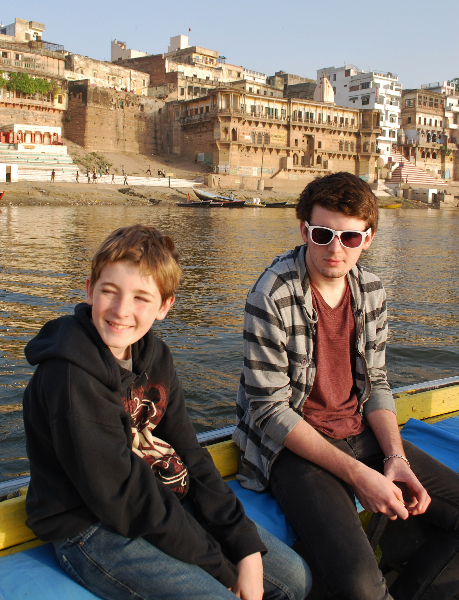
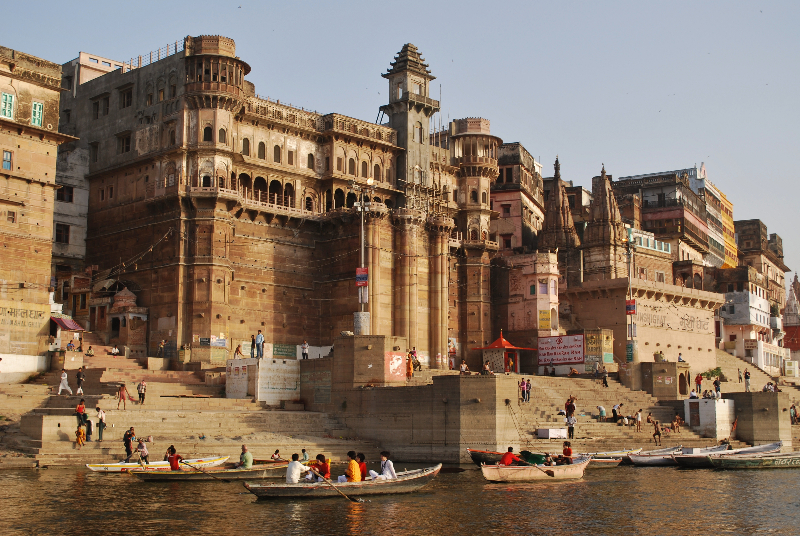
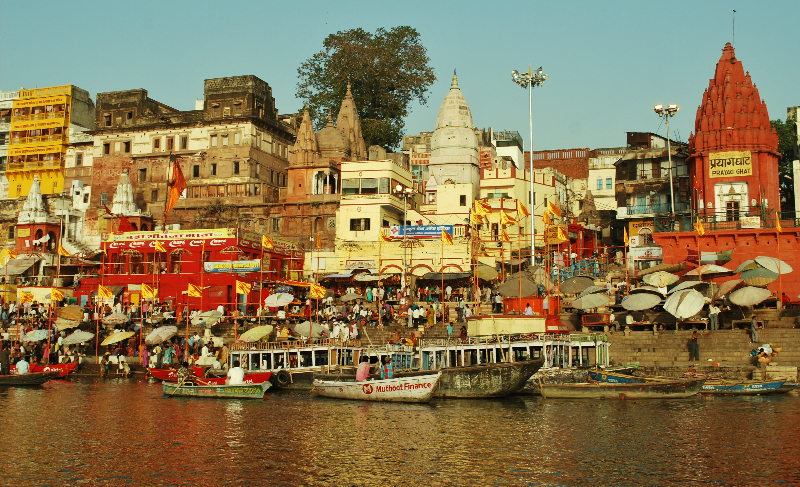
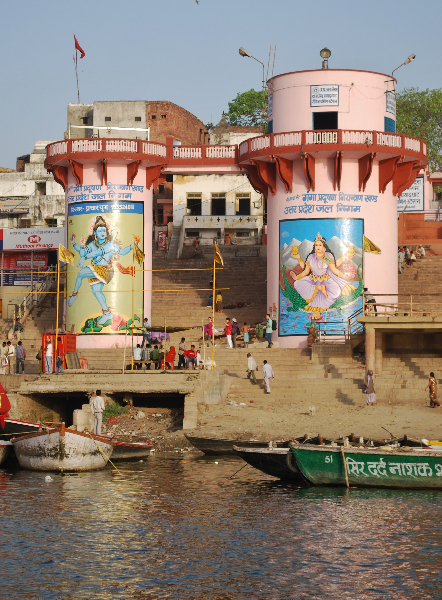
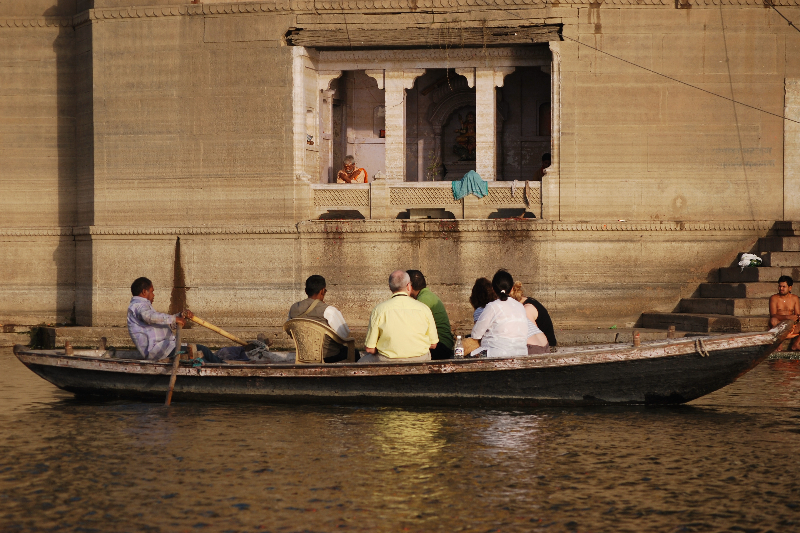
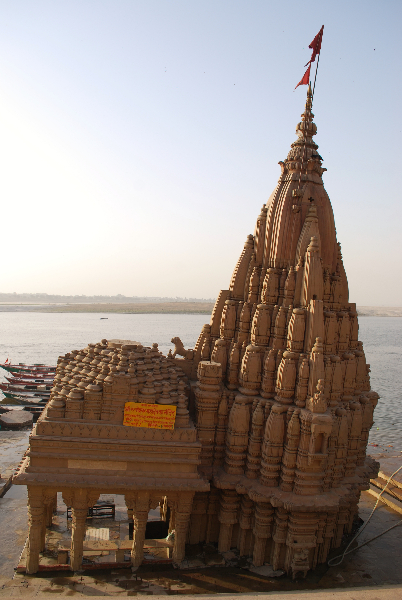
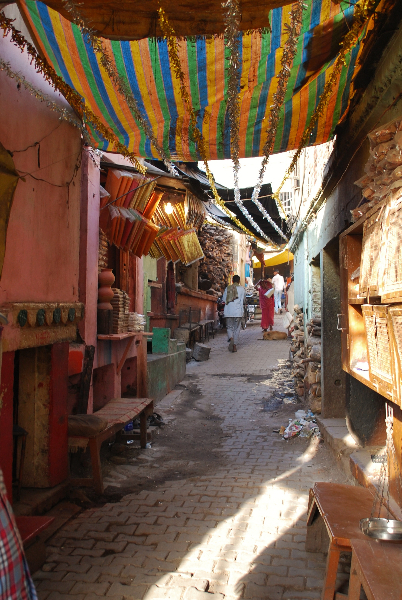

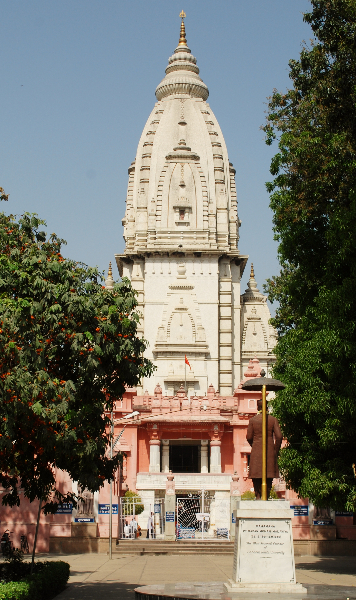
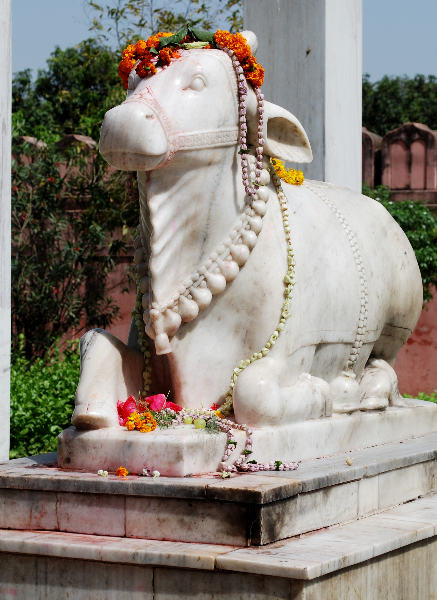
Oh! Stunning. India is the one place where Wanderlust takes unusual hold over me. Thanks for sharing.
Absolutely beautiful photos, Angela and Ken! Your photos have renewed my wish to visit there one day.
Wonderful photo essay. It reinforces my goal to travel in India.
Wow– great photos– thank you for putting this together. How hot was it? I want to go to India, but I don’t do extreme heat. :)
Truly stunning photos. Thanks for sharing.
Wow! Loved these pictures!
Paula, India does have some seasons. We didn’t find it too hot, but we live in Singapore which is 31 degrees all day and all night relentlessly with high humidity. I prefer the dry heat of Delhi. Ranthambore (where we did a tiger safari) was downright cool in the evenings and mornings. Jaipur and Agra were not too bad, a dry heat. Varanasi was pretty warm, but not downright hot, IMO. We travelled for spring break (end of March).
However, bear in mind that having your legs exposed in public will expose you to a lot of unwanted leering if you go to very traditional places, so we wore pants every day. When I go there on business, I do wear knee length skirts often, but in business districts it’s not so unusual to see women wearing Western clothing styles. It is unusual when you go to cities like Varanasi. We didn’t go to Ranakpur to see the Jain temples which are spectacular. If you go to Jainist sites, wearing leather is forbidden and very offensive.
For those thinking of going – it is definitely a great place to go! Don’t drink the water (or use it to brush your teeth), ice cubes, or milk (not pasteurized). Everyone but me got pretty sick on our trip.
Gorgeous pictures. I was there almost 4 years ago to this day. I have some of the same picture though they don’t look as alive and vibrant as yours. Did you bathe in the ganges? I decided you only live once and took a dip. However, I thought that you weren’t supposed to take picture of the ganges or is that the ghats? Also, I’d be interested in hearing your thoughts on the cremations that occurr there. That was kind of a life changing moment seeing that. I might submit an essay on that sometime.
Spencer, whether you can or can’t take pictures of the Ganges and ghats, many have. Our tour guide, who was very devout, did not take exception to photo taking.
My oldest son was very interested in the cremations as he did a report on the Aghori in school. The Aghori are taboo breakers. Interesting to read about them, although it seems sensationalistic to western sensibilities.